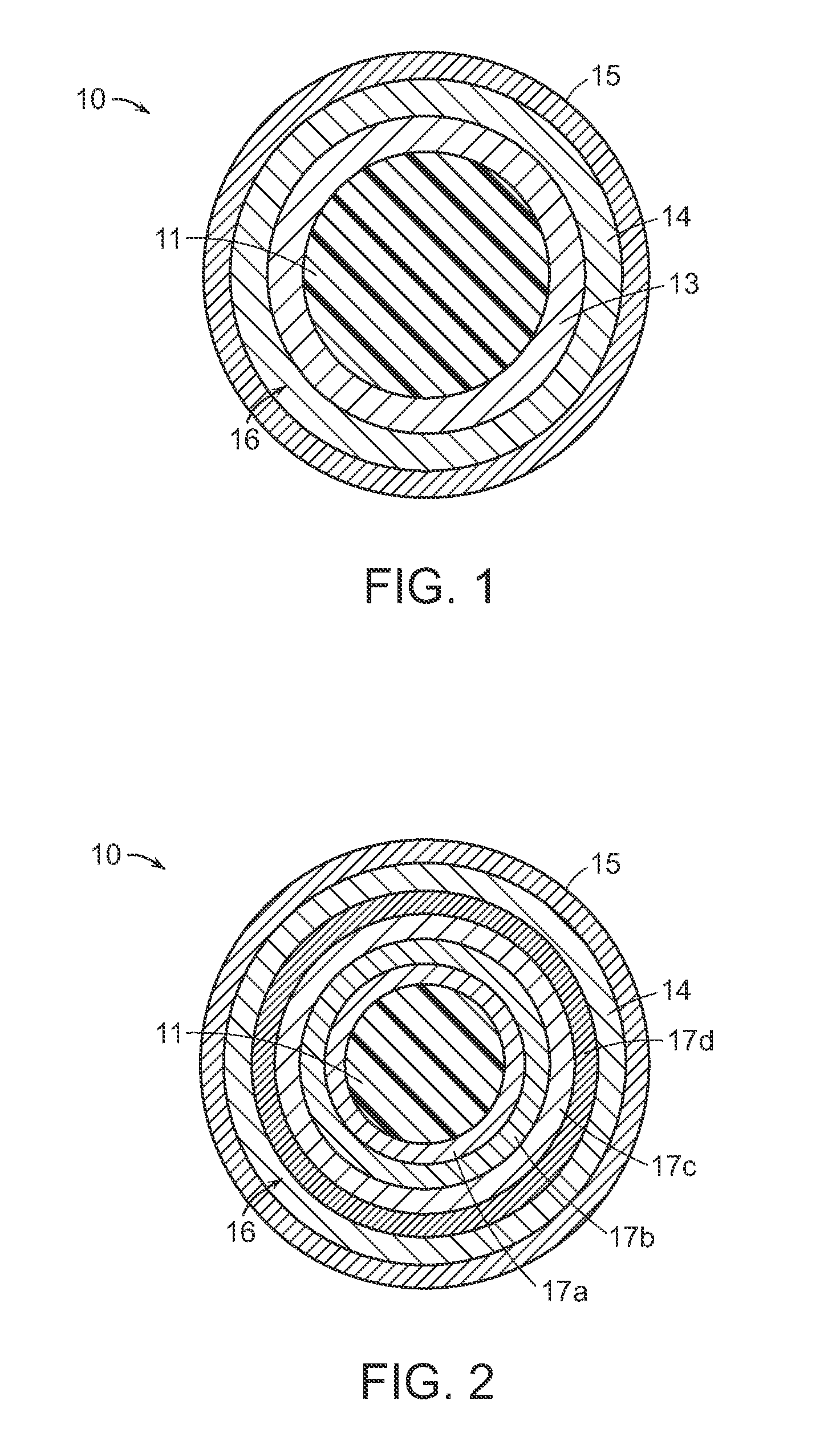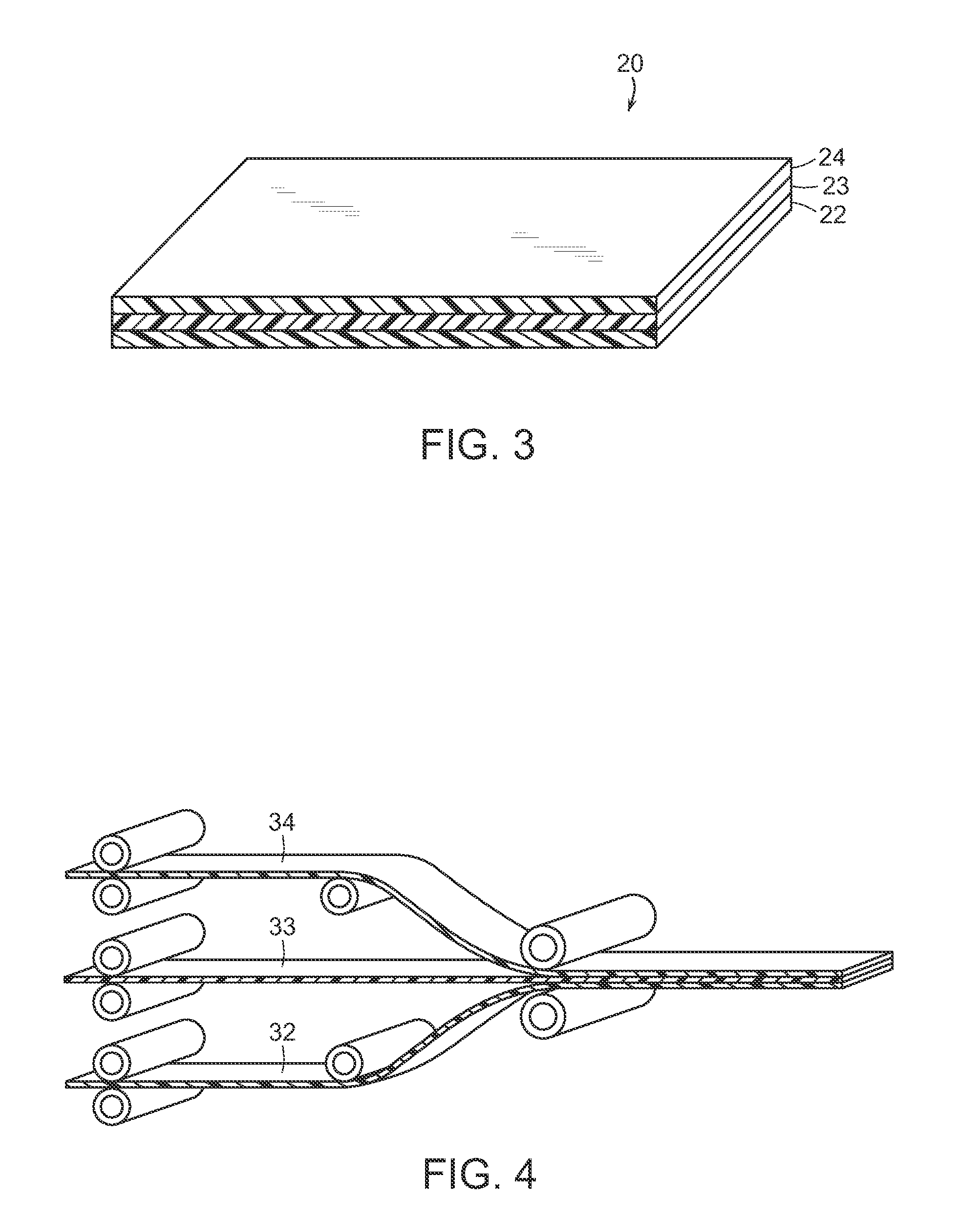Multi-layered core golf ball
a golf ball and multi-layer technology, applied in the field of golf balls, can solve the problems of difficult control around the greens, difficult manufacturing of wedge balls, and difficulty in feeling, and achieve the effect of high partial wedge spin and good durability
- Summary
- Abstract
- Description
- Claims
- Application Information
AI Technical Summary
Benefits of technology
Problems solved by technology
Method used
Image
Examples
Embodiment Construction
[0035]Referring to FIGS. 1 and 2, golf ball 10 includes a core 16 and a cover 15. Core 16 includes a center 11, and at least one core layer. FIG. 1 depicts an embodiment of the invention having two outer core layers, an intermediate core layer 13 and a relatively rigid outermost core layer 14. However, FIG. 2 describes an embodiment having five core layers. They are: a first intermediate core layer 17a, a second intermediate core layer 17b, a third intermediate core layer 17c, a fourth intermediate core layer 17d, and a fifth core layer which is generally very rigid, also referred to as the outermost core layer 14.
[0036]Referring to FIG. 2, the center 11 is preferably formed by compression molding a sphere from a prep of center material. Compression molding solid centers is well known in the art.
[0037]Referring to FIGS. 3 and 4, in order to form multiple layers around the center in a first embodiment of the invention, preferably a laminate 20 is formed. The laminate 20 is comprised ...
PUM
 Login to View More
Login to View More Abstract
Description
Claims
Application Information
 Login to View More
Login to View More - R&D
- Intellectual Property
- Life Sciences
- Materials
- Tech Scout
- Unparalleled Data Quality
- Higher Quality Content
- 60% Fewer Hallucinations
Browse by: Latest US Patents, China's latest patents, Technical Efficacy Thesaurus, Application Domain, Technology Topic, Popular Technical Reports.
© 2025 PatSnap. All rights reserved.Legal|Privacy policy|Modern Slavery Act Transparency Statement|Sitemap|About US| Contact US: help@patsnap.com



